Questions Answered – Sizing Saw Handles
Question:
As a women with smaller hands and a height of 5’3″ I was wondering how I would go about finding a saw that is a proper fit. Ive noticed among tenon, hand and dovetail saws most of the handles are much to large for my hands. Could using a saw that is too large for my hands effect the accuracy of my work and if so how would I find a saw that fits me? Are the recommendations for fit different per saw? Lastly, Ive noticed some saw handles are up higher at an angle to the blade and some handles are more in line with the blade of the saw is this just preference for the user or are there reasons for this difference?
Winter May
Answer:
It does matter. Many older saws have much smaller saw handles than those made today. The makers were conscious that saw handles needed to suit the user and somehow managed to create handmade handles that seemed more to enclose the hands of men rather than allow them to slop around inside as is often the case with today’s plastic saw makers and indeed some quality saw makers too. The saw handles were quite tight between the top and bottom horns of the handle and also in the inner oval too. This provides much greater control to the hand and helps coordinate direct thrust from the saw.
The two saw handles above are not particularly dissimilar to look at but they are in the hand very different indeed. The top one from the late 1700 to early 1800’s has a small handle and that may seem a problem if you have large hands. My hands are indeed large and yet, though smaller than all of the modern makers making handsaws today, this saw truly fits my hand perfectly. The bottom saw looks sleek, but it works against me most of the time and I cannot use it in my work because its so ineffective. On the other hand the most modern Veritas saw shown below fits my hand well and actually has enough meat in the wood for me to adjust sizing if i need it. It actually fits my hand well and is angled for good inline-thrust.
Whereas most people often use the saw by putting all four fingers inside the oval, which is wrong, a full-fist grip decreases sensitivity and denies the vertical alignment sensitivity to the saw in use. You have much less control of the saw.
The index finger is always placed alongside the handle as if pointing and this gives optimum control. Rarely if ever would this be different.
Sizing in new saws is difficult because unlike in times past when handles were indeed hand made and size with variation possible and even likely, today its a one-size-fits-all sizing and the mentality of what holds a lot holds a little is where we are left. Most saw handles are made using CNC routers that cut the handles from blanks and these saws bear the hallmark at different junctures in the process. These two saws below are made using suck methods.
It’s fast and effective and reduces man hours in production. There is only a minor difference in the end result but both saw handles are oversized.
Regardless of saw type, examine the old saws of centuries of makers and you will always find the handles were ‘tight’ and rarely oversized. Here, from 8″ dovetail saws with 20tpi to 26″ handsaws with 5tpi you will see that the handles are quite close.
You might consider gent’s saws with inline handles for general small work such as small tenons and dovetailing and so on. They are very effective and have the most direct thrust of all saws. Sizing is simple, most hands fit them and they can be readily removed, turned to size and restored.
Angles to the saw handle in relation to presentation do vary between makers. Generally it’s best to look for a handle that gives the most thrust behind the end of the saw. If the line of the handle part that you grip is too shallow and high you will have less thrust behind the heel of the saw. This then takes more effort to push the saw into the wood.
In conclusion I would say look for older saws that are more likely to fit your hand You will find one that will visually seem right.



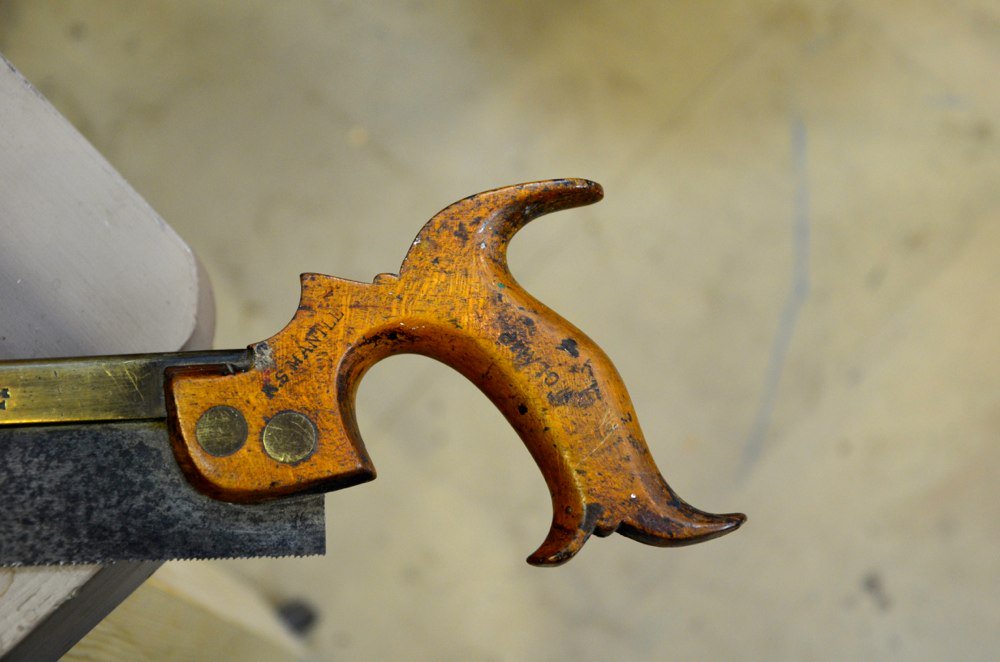


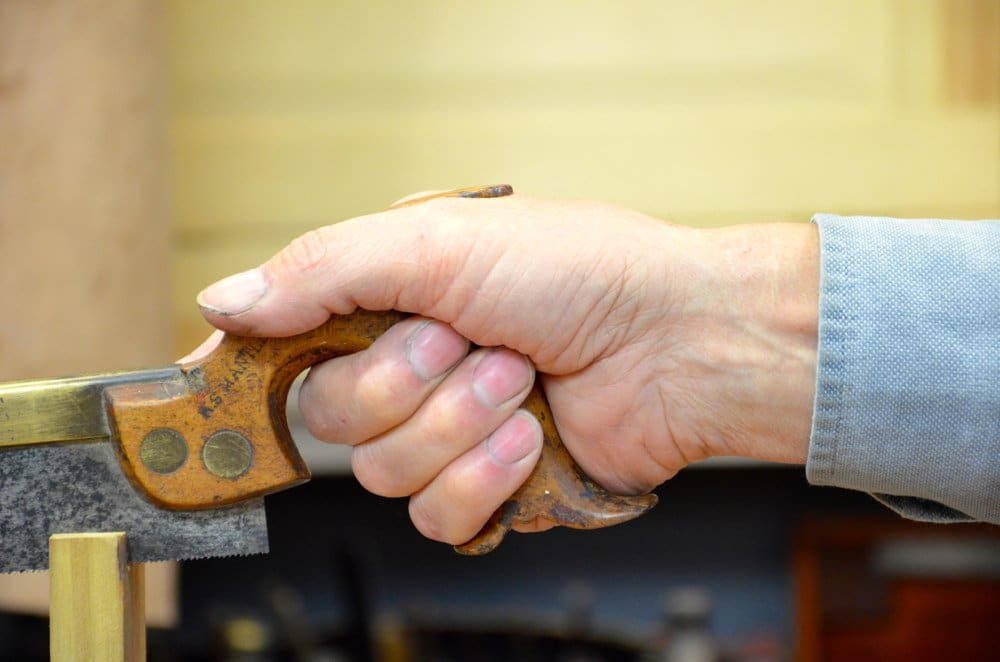
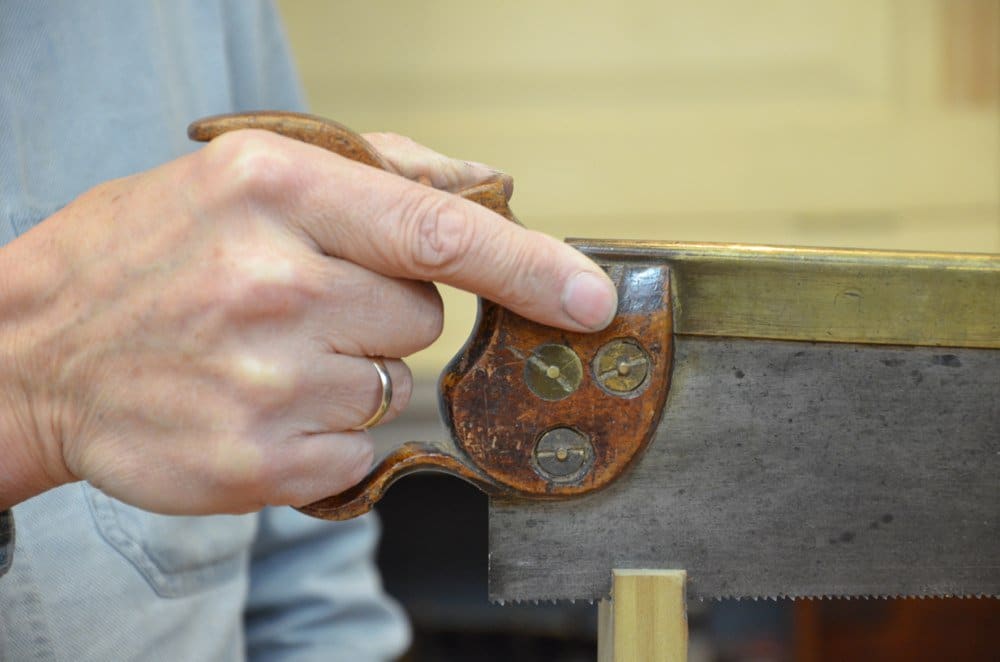
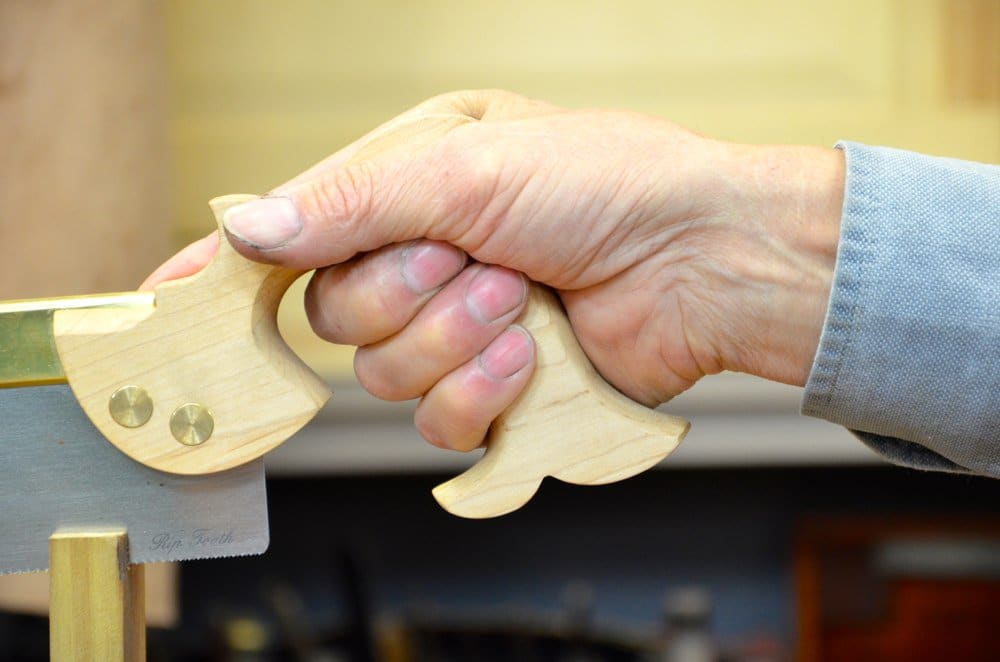
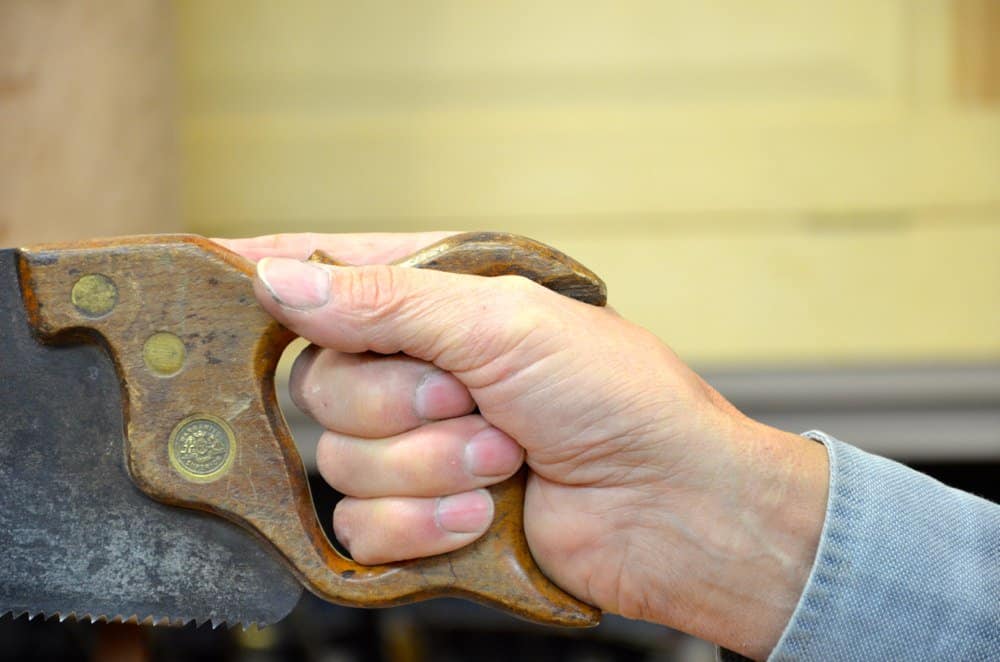
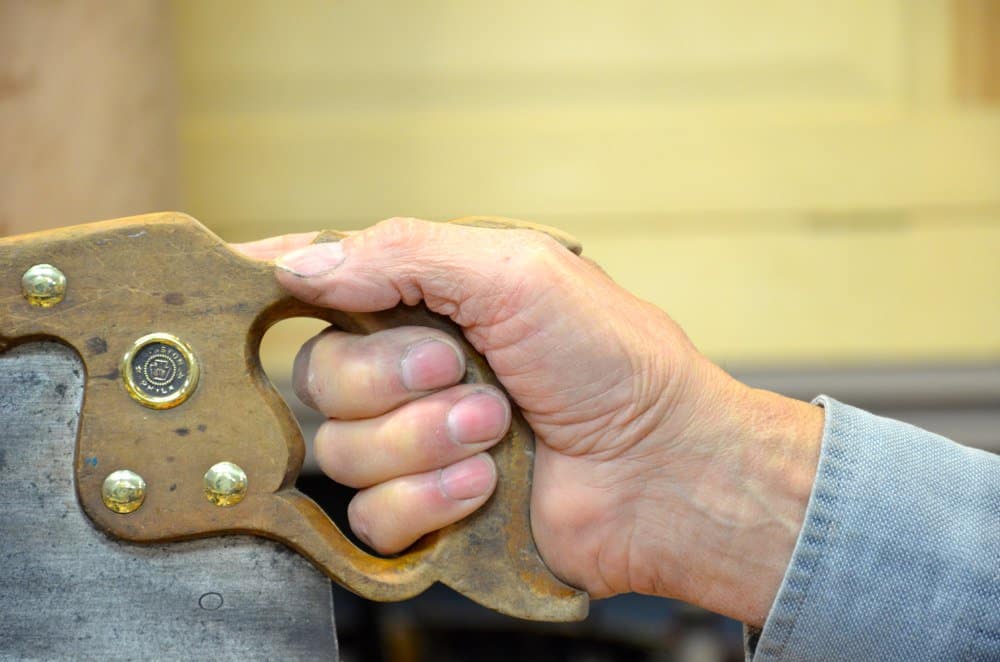
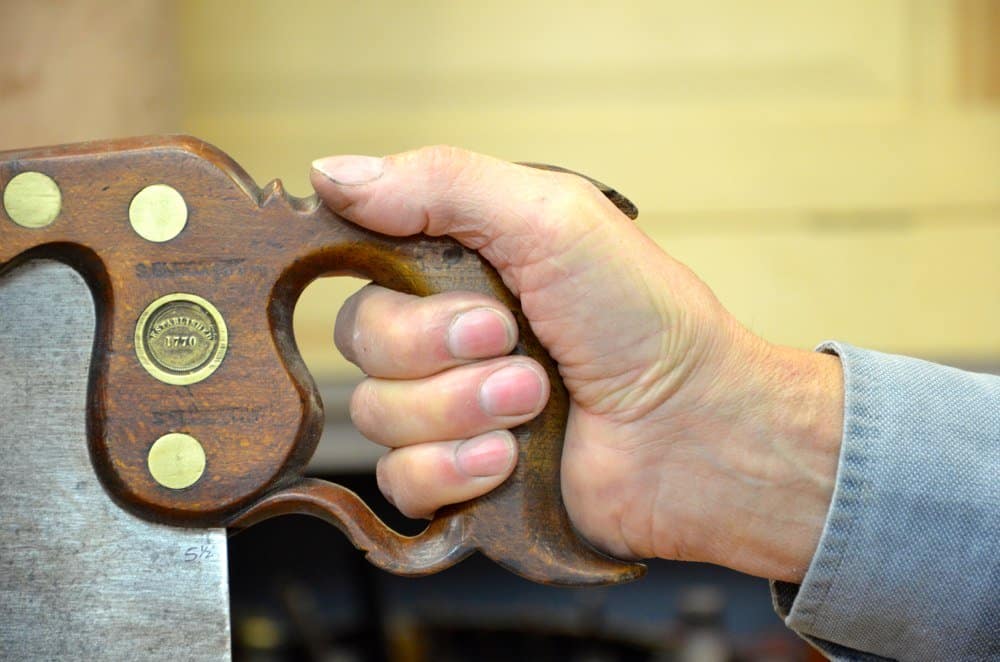



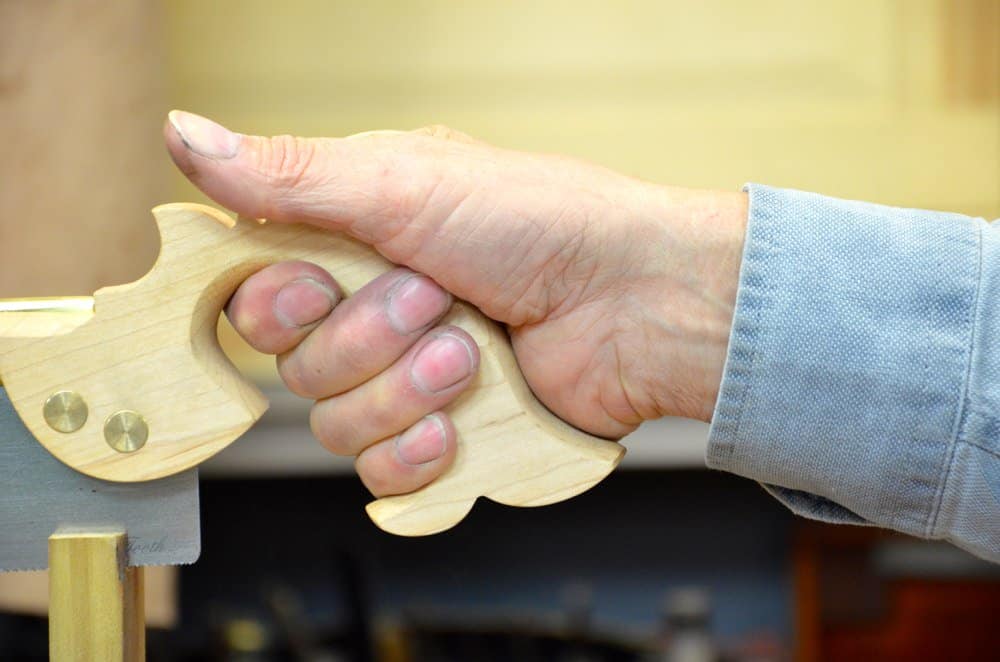

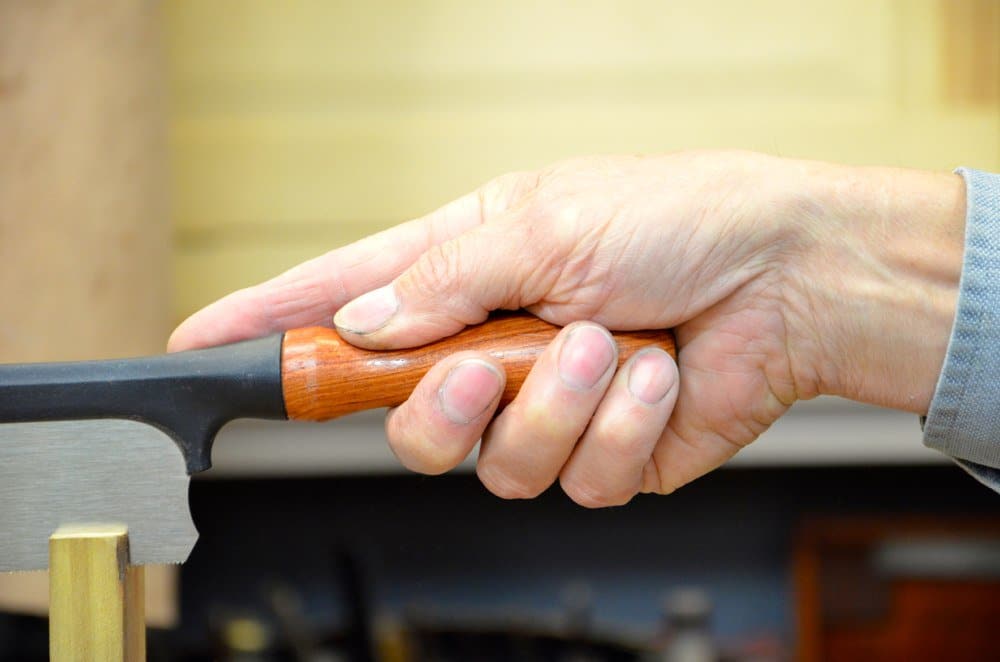
Paul, I have an small old dovetail saw (a fairly nice one as far as my inexperienced eyes are concerned), but I have trouble cutting with it. When I grip the handle as it’s been designed to be gripped the teeth catch frequently in the cut, but when I hold the handle further down towards the end (it’s a pistol grip), such that the thrust is more in line with the blade, I find I can cut quite smoothly. Is this an error in my technique or the handle? The saw appears to be quite old and well made, so I assumed that the problem was with the way I was using it, but now I’m not too sure..?
I think Paul comments on this exact issue in one of his youtube videos. As he is ripping a board with one back saw, the saw is quite unsmooth in the cut. He then pulls out an other saw with the handle at a different angle and position in relation to the teeth, and it cuts very smoothly. IIRC he says something like, in some situations one configuration might be better than the other.
That said however, it has been my experience that lifting the saw just slightly helps (In other words reduce the pressure at the teeth). Also you could always make an alternate handle for the saw. Just trace around the current one, make some adjustments to the design. I have done this with great success to replace plastic handles on several saws.
I have been woodworking as a hobby since the late ’70s. I have a rather large collection (not for decoration, as I use all of them) of restored Disston and Atkins saws. I never understood why the handles were so tight before. I guess the old “saw” is true… “The more you know, the more you know you don’t know”.
I agree with the lady. I have always found that a saw seems to flop about in my average sized hands. Then I bought a rusty dovetail saw with a broken pistol grip from a car boot sale. I overhauled it as per instructions in this blog. The saw fits like a glove. Well, apart from the fact that it isn’t leather, doesn’t keep my hands warm and doesn’t have finger holes. Apart from that ot fits ever so well. Accuracy for this beginner is much improved. I have an old saw, ruddy great thing, that was cross cut. I converted it to rip and I think the final stage might be to make a new handle. I recommend making your own rip. New ones are so expensive.
Because I have very small hands, western saws have never fit properly and I kind of thought the horns were purely decorative as they did nothing for me. I recently made a replacement handle for a dovetail saw and sized it properly; the difference is significant. I’ll now be replacing the handles on all my saws. Something I found that helps until a suitable handle is ready is to tie a turks-head knot (a woggle) at bottom of the existing handle. It essentially shortens the handle and functions as a partial lower horn.